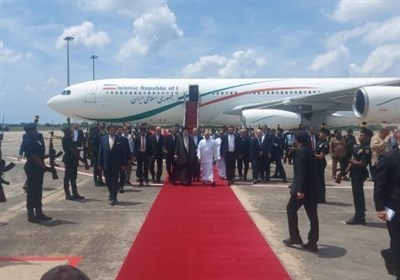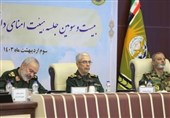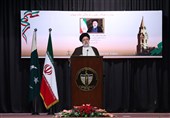Super-Sized Memory Trainable, Long Lasting
TEHRAN (Tasnim) – The ability to perform astonishing feats of memory, such as remembering lists of several dozen words, can be learned, researchers report in Neuron on March 8.
After 40 days of daily 30-minute training sessions using a strategic memory improvement technique, individuals who had typical memory skills at the start and no previous memory training more than doubled their memory capacity, going from recalling an average of 26 words from a list of 72 to remembering 62. Four months later, without continued training, recall performance remained high.
Brain scans before and after training showed that strategic memory training altered the brain functions of the trainees, making them more similar to those of world champion memory athletes. "After training we see massively increased performance on memory tests," says first author Martin Dresler, assistant professor of cognitive neuroscience at Radboud University Medical Center in Nijmegen, The Netherlands. "Not only can you induce a behavioral change, the training also induces similar brain connectivity patterns as those seen in memory athletes."
Among the top-ten memory athletes in the world a few years ago was co-author Boris Konrad, a professional memory trainer who is also a post-doc in Dresler's lab. Konrad and other top competitors in the World Memory Championships can memorize about a five hundred digits or a hundred words in five minutes. Konrad, who had become a memory athlete to improve his academic performance, helped connect Dresler to other top memory athletes for this study. Dresler began the work as visiting scholar at the Stanford University School of Medicine laboratory of memory disorders researcher Michael Greicius.
Dresler examined the brains of 23 world-class memory athletes and 23 people similar in age, health status, and intelligence but with typical memory skills. He used functional magnetic resonance imaging (fMRI), a means of measuring brain activity by detecting blood flow changes inside the brain, to measure differences in the strengths of communications between brain regions. He used structural MRI to measure differences in sizes.
Initially, Dresler expected that memory champions might have notable differences in brain anatomy, the same way one might expect a world champion body builder to have unusually large muscles. Using structural MRI, however, they didn't see differences.
Rather, the differences they detected between memory athletes and non-athletes were in connectivity patterns spread across 2,500 different connections in the brain. A subset of 25 connections most strongly differentiated athletes from those with typical memory skills.
Konrad, who was among those scanned, wasn't born with exceptional memory skills. Nor were the other athletes Dresler studied. "They, without a single exception, trained for months and years using mnemonic strategies to achieve these high levels of performance," Dresler says.
To explore the effects of training on the brain, Dresler and his colleagues recruited 51 individuals similarly matched to the memory athletes, but with typical memory skills and no previous memory training. They were split into three groups: two training groups and one group that did not train. The researchers scanned participants' brains before and after training.
The two training methods were short-term memory training and strategic memory training. During short-term memory training, an individual practices remembering sequences, a bit like playing the game Concentration. Strategic memory training provides trainees with a systematic way to remember lists.
In this study, the strategy Dresler chose was memory of loci training, which is employed by most world champion memory athletes. Using this strategy, items on a list are associated with a remembered place, and users navigate that remembered place as they recall the list.
Those who trained using method of loci showed substantial improvement in their ability to recall lists of words. Before training, individuals could recall on average between 26 and 30 words. Afterwards, those with strategic memory training could recall 35 more words on average. Those who trained short-term memory could recall 11 more words. Those with no training recalled 7 more words.
A day later, those who had trained still showed improvements in recall. Four months later, only those with strategic training continued to show substantial gains, still recalling over 22 more words than prior to training. "Once you are familiar with these strategies and know how to apply them, you can keep your performance high without much further training," says Dresler.
After training, brain scans of those in the strategic training group had changed. They showed patterns that more closely resemble those of memory champions than scans taken prior to training.
To begin to understand how the connectivity patterns in the brains of memory athletes influence memory performance, Dresler and colleagues looked at the 25 connections that most differentiate memory athletes from others. They found hubs of connectivity to two brain regions. One, the medial prefrontal cortex, is known to be active when individuals relate new knowledge to pre-existing knowledge. The other, the right dorsal lateral prefrontal cortex, is known to be involved in efforts to learn strategically. "It makes sense that these connections would be affected," says Dresler. "These are exactly the things we ask subjects to do when using method of loci for memorization."
Dresler and his team are still analyzing their brain scan data to learn more about the differences in brain connectivity patterns they found and how they affect memory.






